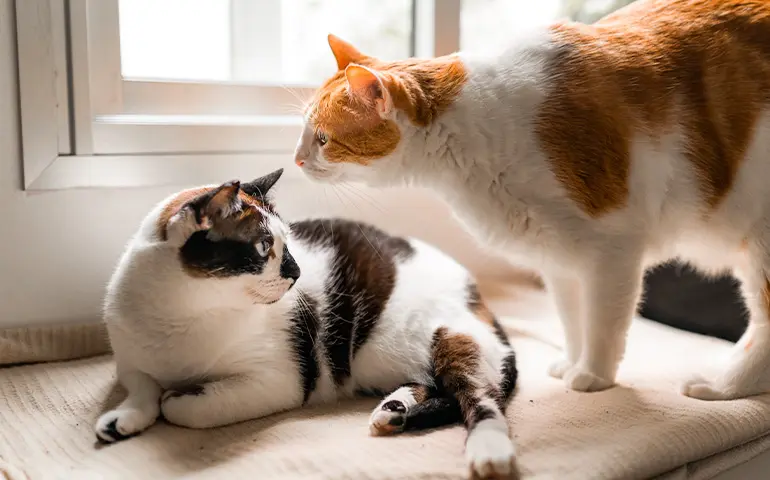First of all, who hasn’t wanted to adopt another pet to keep their current one company? This desire is quite common; however, it is often quickly dismissed when considering the possibility that the older pet may reject the newcomer.
This situation is often even more critical in the case of cats. Cats are known to be very territorial animals. However, there are methods to ensure that their introduction goes smoothly.
So, where should I start?
First of all, the first step is to designate spaces and objects for each cat, such as litter boxes, food bowls, and water dishes. This way, the older pet will not feel like they are “losing space” to the newcomer, which helps to avoid some conflicts in advance.
What should I do next?
A good strategy is to keep the new cat in a separate room that isn’t frequently visited by the older cat. Whenever possible, allow them to make safe eye contact. Over the days, as they become more accustomed to each other’s presence, use treats or food so that their encounters are associated with positive experiences.
Above all, it is important that the introduction between the two cats happens as naturally as possible. Always remember to conduct the first meeting in places with escape routes in case they feel threatened. Never confine the cats in closed environments hoping they will naturally get along.
During the introduction period, it is normal for the cats to puff up their fur and show their teeth to each other. Don’t be alarmed!
What to do in case of fights?
Always be prepared, as fights can happen. Kitchen gloves can be used to prevent scratches if intervention is necessary. Remember that it is essential for the meeting to be as pleasant as possible for both cats. Therefore, avoid getting upset with them if things don’t go as planned.
Seek a qualified professional who specializes in feline behavior for assistance if difficulties with the introduction persist.
Text produced by Buddy Vet in partnership with Livelong Brasil.
